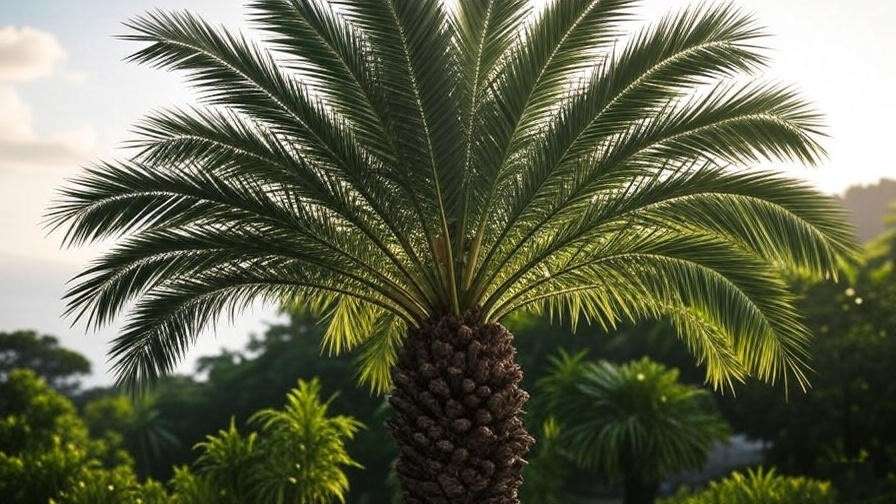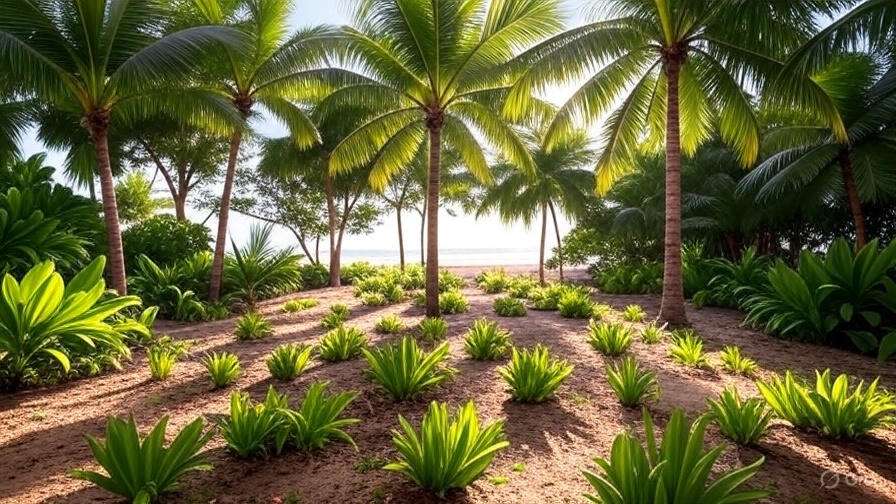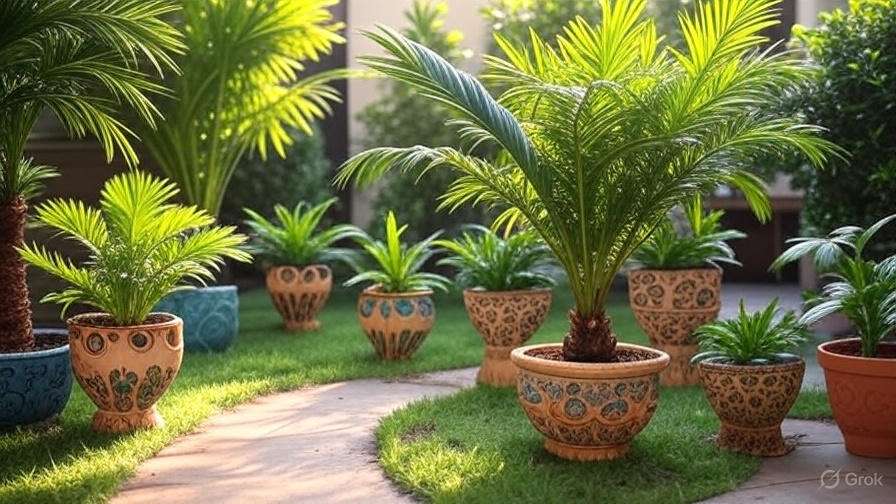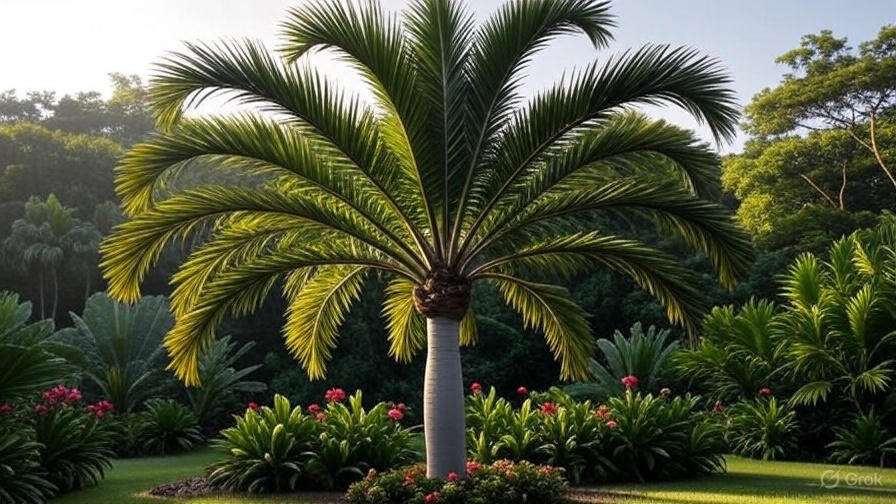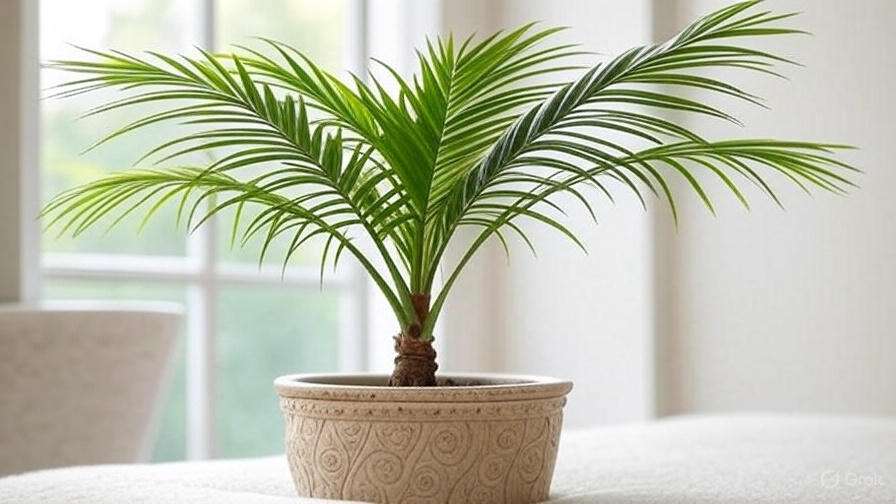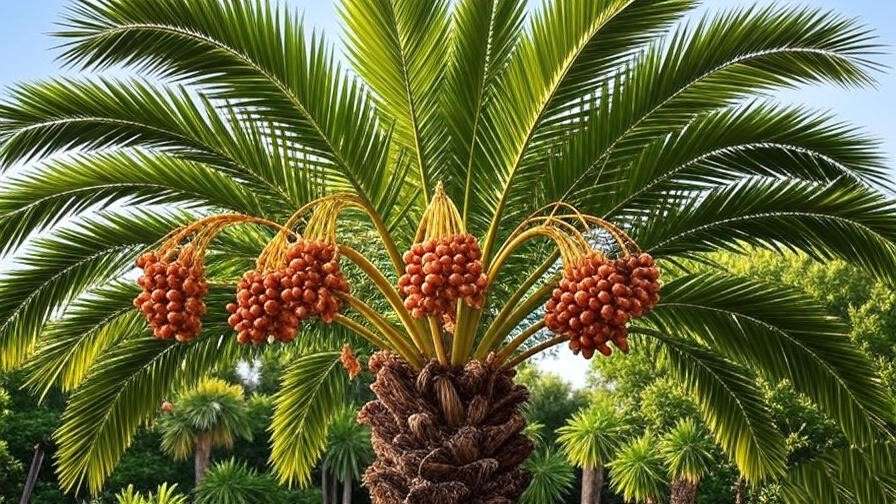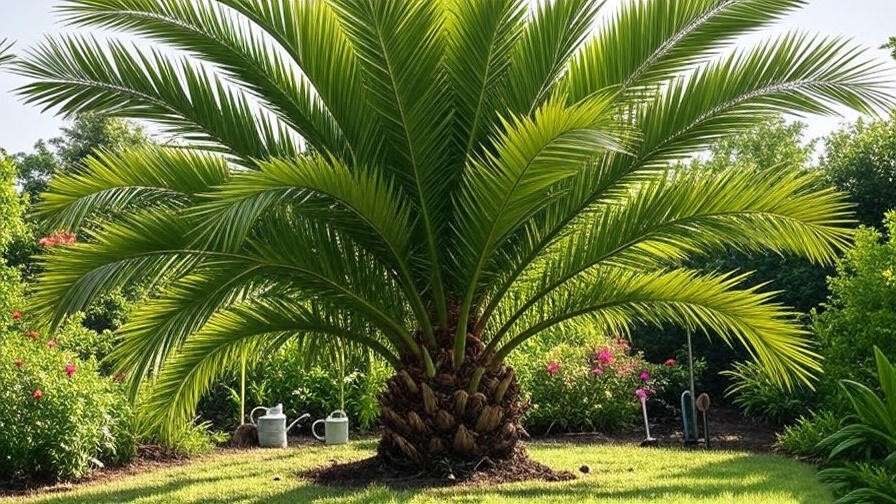Picture this: a lush, tropical oasis in your backyard, with the majestic Sylvester palm tree stealing the show, its silvery-green fronds swaying gently in the breeze. 🌞 Whether you’re a homeowner dreaming of a vibrant landscape or a plant enthusiast eager to master tree care, the Sylvester palm (Phoenix sylvestris) is your ticket to a stunning, low-maintenance centerpiece. Known for its resilience and tropical charm, this palm transforms gardens, patios, and commercial spaces with ease. But how do you ensure it thrives? In this comprehensive guide, I’ll share expert-driven, step-by-step advice on planting, caring for, and troubleshooting issues with your Sylvester palm tree. Backed by years of horticultural experience, this article will equip you with everything you need to grow a healthy, eye-catching palm that elevates your outdoor space. 🌿
Understanding the Sylvester Palm Tree 🌿
What Is a Sylvester Palm Tree?
The Sylvester palm tree, scientifically known as Phoenix sylvestris, is a striking member of the Arecaceae family, native to South Asia, particularly India and Pakistan. Often called the silver date palm or wild date palm, it boasts silvery-green, feather-like fronds and a robust, textured trunk that can reach 40–50 feet tall at maturity. Its drought tolerance and adaptability make it a favorite in warm climates, from coastal regions to desert landscapes. Unlike its cousin, the true date palm (Phoenix dactylifera), the Sylvester palm produces smaller, less sweet dates, but its ornamental value is unmatched.
Benefits of Growing a Sylvester Palm Tree
Why choose a Sylvester palm? Beyond its tropical allure, this tree offers a host of benefits:
- Aesthetic Appeal: Its elegant fronds and sturdy trunk create a dramatic focal point for gardens, patios, or poolside areas.
- Environmental Perks: Sylvester palms provide shade, reduce urban heat, and improve air quality by filtering pollutants.
- Practical Uses: In optimal conditions, they produce edible dates, and their presence can boost property value by enhancing curb appeal.
- Versatility: Thrives in various settings, from residential yards to commercial landscapes, making it a go-to for landscapers.
With proper care, a Sylvester palm can live up to 100 years, becoming a legacy feature in your outdoor space.
Planting Your Sylvester Palm Tree 🌱
Choosing the Right Location
To set your Sylvester palm up for success, location is key. These palms thrive in USDA Hardiness Zones 8b–11, where temperatures rarely dip below 20°F (-6°C). They need full sun exposure—6 to 8 hours daily—to develop their signature lush fronds. When selecting a spot, consider the tree’s mature size: up to 50 feet tall and 20–30 feet wide. Ensure there’s enough space to avoid crowding from buildings, power lines, or other plants. For urban gardeners, a sunny corner of the yard or a spacious patio (for potted young palms) works well.
Soil Requirements and Preparation
Sylvester palms prefer well-draining, sandy loam soil with a pH between 5.5 and 7.5. Before planting, test your soil’s pH and nutrient levels using a home testing kit or a professional lab service. If drainage is poor, amend the soil with organic matter like compost or peat moss to improve aeration and water flow. Avoid heavy clay soils, which can trap water and cause root rot. For nutrient-deficient soils, mix in a balanced, slow-release fertilizer to give your palm a strong start.
Expert Tip: Add a 2–3 inch layer of organic mulch around the planting site (but not touching the trunk) to retain moisture and regulate soil temperature.
Planting Steps for Success
Follow these steps to plant your Sylvester palm correctly:
- Choose the Right Time: Plant in spring or early summer to allow the palm to establish roots before cooler months.
- Dig the Hole: Make it twice as wide and as deep as the root ball to encourage root spread.
- Prepare the Root Ball: Gently loosen the roots of a container-grown palm to promote growth.
- Place the Palm: Set the root ball in the hole so the top sits level with or slightly above the soil surface. Planting too deep can suffocate the roots.
- Backfill and Water: Fill the hole with soil, tamping lightly to remove air pockets, and water thoroughly.
- Stake if Necessary: For tall or windy areas, stake the palm for 6–12 months to stabilize it.
Common Mistake to Avoid: Overwatering after planting can lead to root rot. Water daily for the first 2–3 weeks, then taper off as the palm establishes.
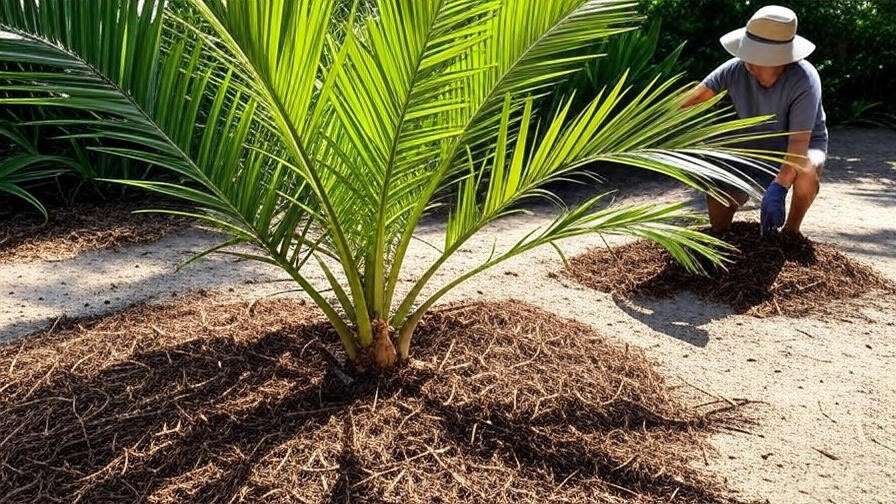
Essential Care Tips for a Thriving Sylvester Palm 🌞
Watering Needs
Watering is critical, especially during the establishment phase. For the first 2–3 weeks, water your Sylvester palm daily to keep the soil consistently moist but not soggy. Once established (after 3–6 months), reduce watering to 1–2 times per week, depending on your climate. In hot, arid regions, deep watering every 5–7 days is ideal, while coastal areas may require less. Check the soil 2–3 inches deep; if it’s dry, it’s time to water.
Signs of Watering Issues:
- Overwatering: Yellowing fronds, soft trunk, or fungal growth near the base.
- Underwatering: Browning frond tips, drooping leaves, or slow growth.
Adjust your schedule based on rainfall and seasonal changes to keep your palm hydrated but not waterlogged.
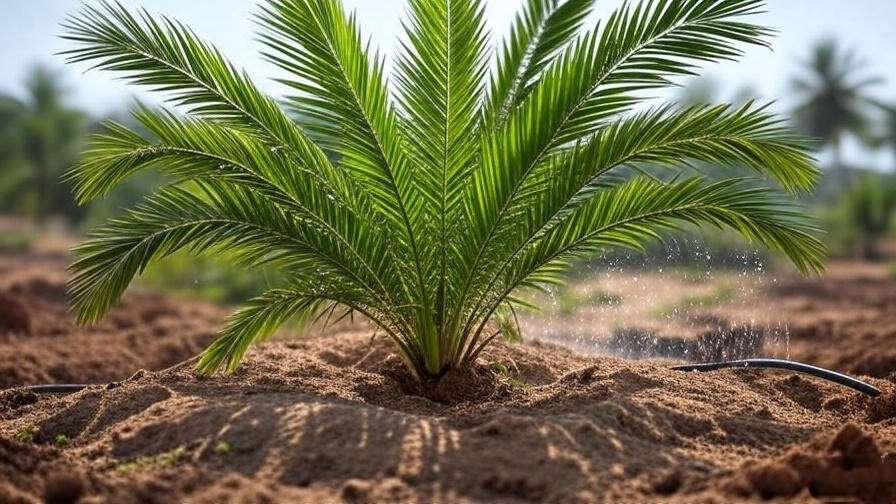
Fertilizing for Optimal Growth
Sylvester palms need regular feeding to maintain vibrant fronds and steady growth. Use a palm-specific, slow-release fertilizer with an NPK ratio of 8-2-12 or 8-4-12, rich in potassium and magnesium to prevent deficiencies. Apply fertilizer 3–4 times per year (spring, early summer, and early fall) around the base, extending to the drip line (the area under the outermost fronds). Water thoroughly after application to help nutrients penetrate the soil.
Expert Tip: Avoid over-fertilizing, as excess nutrients can burn roots and cause frond discoloration. Always follow the manufacturer’s dosage instructions.
Pruning and Maintenance
Pruning keeps your Sylvester palm looking tidy and healthy. Remove only dead, yellowing, or damaged fronds, as green fronds are essential for photosynthesis. Use clean, sharp pruning shears and cut close to the trunk without damaging it. For mature palms over 15 feet tall, hire a professional arborist to ensure safety and proper technique. Optionally, remove old leaf bases from the trunk for a smoother, polished appearance, but avoid stripping live tissue.
Maintenance Tip: Regularly inspect the crown for debris, as trapped leaves or fruit can attract pests.

Protecting Against Pests and Diseases
Sylvester palms are hardy but not immune to pests and diseases. Common threats include:
- Pests:
- Palm Weevils: Larvae bore into the trunk, causing structural damage. Look for oozing sap or wilting fronds.
- Spider Mites: Cause stippling on fronds, especially in dry conditions.
- Scale Insects: Appear as small, waxy bumps on fronds or stems.
- Diseases:
- Fusarium Wilt: A fungal disease causing frond yellowing and dieback. No cure; prevention is key.
- Bud Rot: Caused by excess moisture in the crown, leading to blackened, rotting buds.
- Lethal Bronzing: A bacterial disease spread by insects, causing frond browning and tree death.
Prevention and Treatment:
- Inspect your palm monthly for signs of pests or disease.
- Use neem oil or insecticidal soap for minor pest infestations.
- Ensure proper drainage and avoid overhead watering to prevent fungal issues.
- For severe diseases, consult a certified arborist for diagnosis and removal of infected trees to prevent spread.
Expert Insight: “Early detection is critical for palm health. Regular monitoring and good cultural practices can prevent most issues,” says Dr. Jane Carter, a horticulturist with 20 years of experience in tropical tree care.
Troubleshooting Common Sylvester Palm Problems 🛠️
Yellowing or Browning Fronds
Yellowing or browning fronds are among the most common issues Sylvester palm owners face. These symptoms can stem from several causes, each requiring a specific fix:
- Nutrient Deficiencies: A lack of potassium or magnesium often causes yellowing, especially in older fronds. Conduct a soil test to confirm nutrient levels, then apply a palm-specific fertilizer (e.g., 8-2-12 NPK) to correct deficiencies. Reapply every 3–4 months during the growing season.
- Overwatering: Soggy soil leads to root rot, which manifests as yellow, wilting fronds. Check drainage and reduce watering frequency if the soil feels waterlogged. Ensure the planting site allows excess water to escape.
- Underwatering: Browning frond tips or drooping leaves signal insufficient moisture. Increase watering to once or twice weekly, ensuring deep saturation (about 12–18 inches into the soil).
- Pest Damage: Spider mites or scale insects can cause yellowing or stippling. Inspect fronds closely and treat with neem oil or insecticidal soap for minor infestations.
Solution Steps:
- Test soil for pH and nutrients.
- Adjust watering based on soil moisture levels (use a moisture meter for accuracy).
- Apply fertilizer as needed and monitor for pests.
- If symptoms persist, consult a local extension service or arborist for a tailored diagnosis.
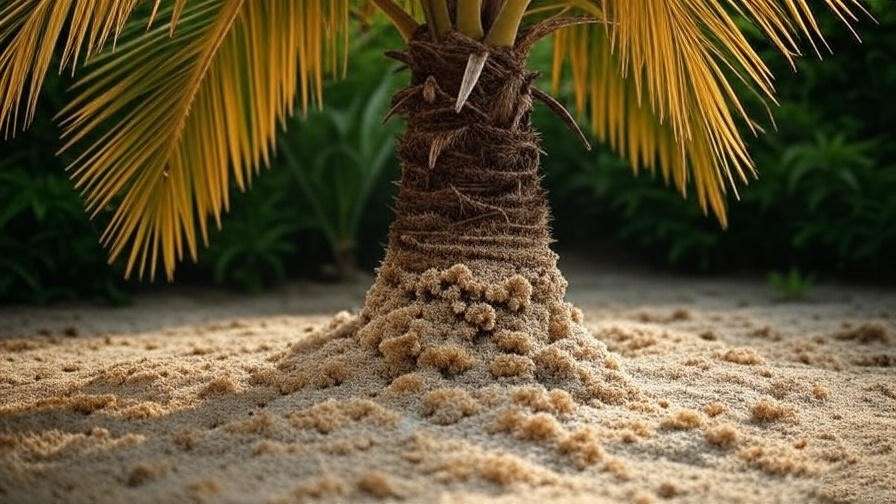
Slow Growth or Stunted Development
If your Sylvester palm isn’t growing as expected, consider these potential culprits:
- Poor Soil Quality: Compacted or nutrient-poor soil restricts root development. Amend with organic matter like compost and ensure proper drainage.
- Insufficient Sunlight: Less than 6 hours of direct sun daily can slow growth. Relocate potted palms to a sunnier spot or trim nearby plants blocking light for in-ground trees.
- Improper Planting Depth: Planting too deep buries the root initiation zone, stunting growth. If you suspect this, carefully excavate around the base to check the root ball’s position and replant if necessary.
Fixing Slow Growth:
- Test and amend soil as described above.
- Ensure full sun exposure by clearing obstructions.
- For young palms, check planting depth and correct if needed (this may require professional help for larger trees).
Expert Tip: “Patience is key with palms. Growth may seem slow initially, but consistent care will yield a robust tree over time,” notes Dr. Maria Lopez, a palm specialist with the University of Florida’s Extension Service.
Cold Damage and Winter Care
While Sylvester palms thrive in warm climates, they can suffer in borderline zones (USDA 8b) where temperatures dip below 20°F (-6°C). Frost or prolonged cold can cause frond browning or, in severe cases, damage the growing bud.
Winter Protection Strategies:
- Mulch: Apply a 3–4 inch layer of organic mulch (e.g., bark or wood chips) around the base, keeping it 6 inches from the trunk to prevent rot.
- Wrap the Trunk: Use burlap or frost cloth to insulate the trunk during cold snaps. Secure it loosely to allow air circulation.
- Cover the Crown: For young palms, drape a breathable frost blanket over the fronds during freezes, removing it once temperatures rise.
- Water Sparingly: Reduce watering in winter to prevent root rot in cold, wet soil.
Recovering from Cold Damage:
- Trim damaged fronds only after new growth appears in spring to avoid stressing the palm.
- Apply a light dose of fertilizer to encourage recovery.
- Monitor for secondary infections like bud rot, which can follow cold damage.
Advanced Tips for Sylvester Palm Enthusiasts 🌟
Propagating Sylvester Palms
Propagating Sylvester palms is a rewarding but challenging process, typically done via seeds or offshoots (pups). Here’s how to approach it:
- Seed Propagation:
- Collect ripe dates from a mature Sylvester palm (orange or reddish in color).
- Remove the flesh and soak seeds in warm water for 24–48 hours to soften the outer coat.
- Plant seeds 1 inch deep in a well-draining seed-starting mix.
- Keep the soil moist and maintain temperatures between 75–85°F (24–29°C).
- Germination can take 2–6 months, so patience is essential.
- Offshoot Propagation:
- Identify healthy pups (small shoots) growing at the base of a mature palm.
- Carefully remove the pup with a sharp, sterile knife, ensuring some roots are attached.
- Plant the pup in a pot with well-draining soil and water regularly until established.
- Transplant to the ground after 1–2 years of growth.
Challenge: Seed germination is slow and inconsistent, and pups require careful handling to avoid root damage. For best results, propagate in spring when temperatures support growth.
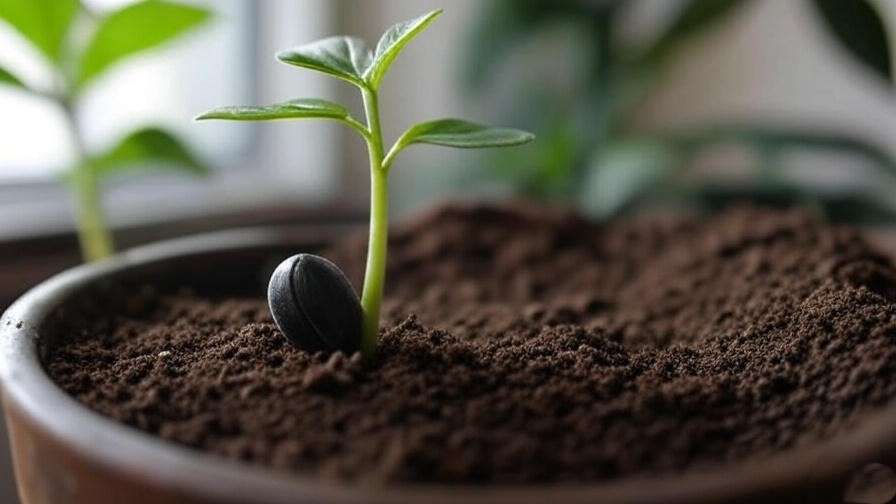
Landscaping with Sylvester Palms
Sylvester palms are versatile landscaping stars. Here are ideas to maximize their impact:
- Focal Points: Plant a single Sylvester palm in a lawn or courtyard for dramatic effect. Surround with low-growing groundcovers like liriope or dwarf mondo grass.
- Privacy Screens: Group multiple palms along property lines to create a natural, tropical barrier.
- Mixed Plantings: Pair with drought-tolerant companions like agave, yucca, or lavender for a cohesive, low-maintenance design.
- Lighting: Install uplighting to highlight the trunk and fronds at night, enhancing nighttime aesthetics.
- Hardscaping: Frame with stone pathways or gravel beds to create a polished, resort-like vibe.
Design Tip: Space palms at least 10–15 feet apart to allow for mature spread and avoid overcrowding.
Sustainable Care Practices
Eco-conscious gardeners can maintain Sylvester palms sustainably:
- Water Conservation: Use drip irrigation to deliver water directly to the root zone, minimizing waste. Apply 2–3 inches of mulch to retain soil moisture.
- Organic Pest Control: Opt for neem oil or beneficial insects like ladybugs to manage pests without harsh chemicals.
- Eco-Friendly Fertilizers: Choose organic, slow-release fertilizers to reduce environmental impact while nourishing your palm.
Sustainability Win: Sylvester palms are naturally drought-tolerant, making them an excellent choice for water-scarce regions like the Southwest U.S. or Mediterranean climates.
Frequently Asked Questions (FAQs) ❓
- How fast do Sylvester palm trees grow?
Under ideal conditions (full sun, well-draining soil, regular feeding), Sylvester palms grow 1–2 feet per year, reaching maturity in 20–30 years. - Can Sylvester palms grow in pots?
Yes, young palms can thrive in large pots (20–30 gallons) for several years, but mature trees require ground planting due to their size and root system. - How do I know if my Sylvester palm is healthy?
Look for vibrant green fronds, consistent new growth (1–2 new fronds annually), and no signs of pests or disease. A firm trunk and healthy crown are also good indicators. - What’s the lifespan of a Sylvester palm tree?
With proper care, Sylvester palms can live up to 100 years, becoming a long-term feature in your landscape. - Do Sylvester palms produce edible dates?
Yes, in warm climates, they produce small, edible dates. However, these are less sweet than commercial varieties and are often used for ornamental or animal feed purposes.
Conclusion🌟
Growing a thriving Sylvester palm tree is within your reach with the right knowledge and care. From choosing the perfect planting spot to mastering watering, fertilizing, and pest control, this guide provides everything you need to cultivate a stunning, healthy palm that transforms your landscape. 🌴 By following these expert-backed tips, you’ll not only enjoy the tropical beauty of your Sylvester palm but also contribute to a sustainable, vibrant outdoor space. Ready to get started? Plant your palm, monitor its progress, and share your journey in the comments below. For more plant care tips, explore our articles on tropical landscaping and palm maintenance. Happy gardening!🌟

